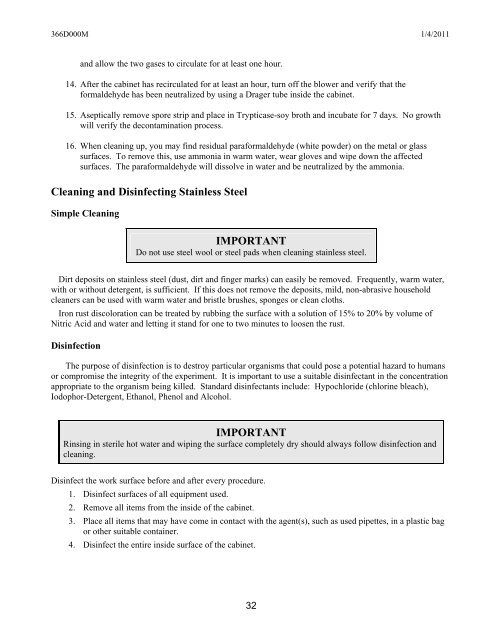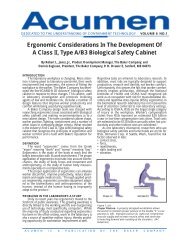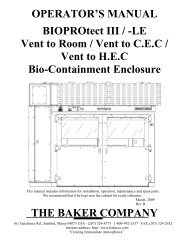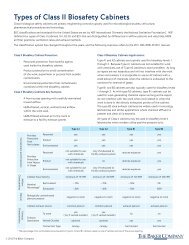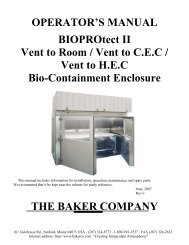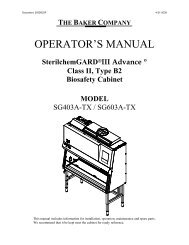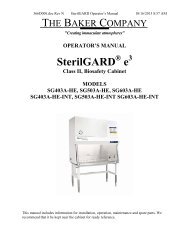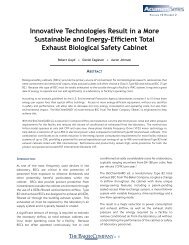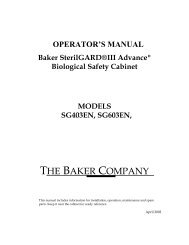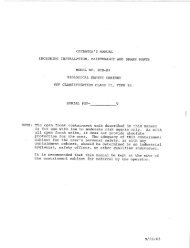OPERATOR'S MANUAL - The Baker Company Blog
OPERATOR'S MANUAL - The Baker Company Blog
OPERATOR'S MANUAL - The Baker Company Blog
Create successful ePaper yourself
Turn your PDF publications into a flip-book with our unique Google optimized e-Paper software.
366D000M 1/4/2011and allow the two gases to circulate for at least one hour.14. After the cabinet has recirculated for at least an hour, turn off the blower and verify that theformaldehyde has been neutralized by using a Drager tube inside the cabinet.15. Aseptically remove spore strip and place in Trypticase-soy broth and incubate for 7 days. No growthwill verify the decontamination process.16. When cleaning up, you may find residual paraformaldehyde (white powder) on the metal or glasssurfaces. To remove this, use ammonia in warm water, wear gloves and wipe down the affectedsurfaces. <strong>The</strong> paraformaldehyde will dissolve in water and be neutralized by the ammonia.Cleaning and Disinfecting Stainless SteelSimple CleaningIMPORTANTDo not use steel wool or steel pads when cleaning stainless steel.Dirt deposits on stainless steel (dust, dirt and finger marks) can easily be removed. Frequently, warm water,with or without detergent, is sufficient. If this does not remove the deposits, mild, non-abrasive householdcleaners can be used with warm water and bristle brushes, sponges or clean cloths.Iron rust discoloration can be treated by rubbing the surface with a solution of 15% to 20% by volume ofNitric Acid and water and letting it stand for one to two minutes to loosen the rust.Disinfection<strong>The</strong> purpose of disinfection is to destroy particular organisms that could pose a potential hazard to humansor compromise the integrity of the experiment. It is important to use a suitable disinfectant in the concentrationappropriate to the organism being killed. Standard disinfectants include: Hypochloride (chlorine bleach),Iodophor-Detergent, Ethanol, Phenol and Alcohol.IMPORTANTRinsing in sterile hot water and wiping the surface completely dry should always follow disinfection andcleaning.Disinfect the work surface before and after every procedure.1. Disinfect surfaces of all equipment used.2. Remove all items from the inside of the cabinet.3. Place all items that may have come in contact with the agent(s), such as used pipettes, in a plastic bagor other suitable container.4. Disinfect the entire inside surface of the cabinet.32


